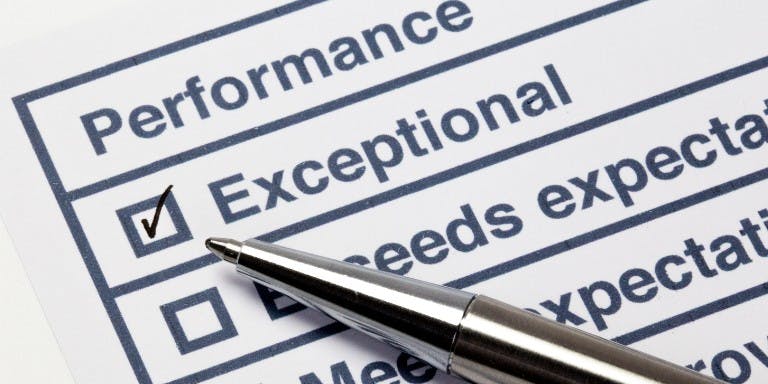First published on Tuesday, January 7, 2025
Last updated on Tuesday, January 7, 2025
Jump to section
If you’ve ever used “performance goals” and “performance objectives” interchangeably, don’t worry—you’re not alone. These terms often get mixed up, but understanding the difference between them is crucial for managing teams effectively and driving success.
Let’s clear up the confusion. While they might sound similar and are both part of performance management, performance goals and performance objectives serve distinct purposes in the workplace.
Here’s what sets them apart and how to use each one to your advantage.
What are performance goals?
Performance goals are broad, overarching outcomes that employees or teams aim to achieve. Think of them as the what—the end result or destination you want to reach.
They’re often long-term, aspirational, and aligned with the company’s big-picture vision. For example:
Increasing market share
Building a stronger company culture
Becoming an industry leader in sustainability
At the individual level, performance goals might look like:
Advancing to a managerial role within three years
Becoming a top performer in sales
Developing expertise in a specialised skill
Key traits of performance goals:
They focus on the big picture
Goals can span months or even years
They’re designed to motivate and guide employees toward success
What are performance objectives?
Performance objectives, on the other hand, are specific, measurable actions that help achieve performance goals. They’re the how—the detailed steps or milestones employees need to accomplish along the way.
For example, if your performance goal is to “increase market share,” your objectives might be:
Launch a new product line by Q3
Increase customer retention rates by 10% within six months
Secure five new key accounts by the end of the year
At the individual level, objectives might look like:
Completing a leadership training programme by March
Closing £50,000 in sales this quarter
Reducing response times for customer inquiries to under 24 hours
Key traits of performance objectives:
They’re clearly defined and trackable
They’re often tied to quarterly or monthly timelines
They focus on the steps needed to achieve broader goals
You can find a full list of performance objective examples here.
How do goals and objectives work together?
Performance goals and objectives are like the destination and the GPS directions. Goals tell you where you’re headed, while objectives map out how to get there.
For example, if you goal is to improve customer satisfaction, your objectives could be:
Conduct a customer feedback survey by February
Train the support team in conflict resolution by Q2
Reduce customer complaint resolution times to under 48 hours within six months
Without objectives, goals can feel overwhelming or vague. Without goals, objectives can feel directionless. Together, they create a clear plan for success.
Why the distinction matters
Understanding the difference between goals and objectives is essential for both employers and employees. Here’s why:
Clarity
Confusing goals with objectives can lead to frustration and misalignment. Clear distinctions ensure everyone understands what’s expected and how to achieve it.
Motivation
Goals provide the inspiration and sense of purpose, while objectives break things down into manageable steps. Employees stay motivated because they can see both the bigger picture and their progress along the way.
Accountability
Objectives make it easier to track performance and hold employees accountable. They provide specific benchmarks to measure success.
Effective planning
For managers, separating goals and objectives helps with resource allocation and strategic planning. You can focus on long-term aspirations while tackling immediate priorities.
How to use goals and objectives in the workplace
Set clear goals first
Start with the end in mind. Define your company’s or team’s performance goals before diving into objectives.
Break down goals into objectives
For every goal, create a set of actionable objectives. Use the SMART framework (Specific, Measurable, Achievable, Relevant, Time-bound) to ensure they’re effective.
Regularly review and adjust
Goals and objectives aren’t set in stone. Regular check-ins allow you to refine them based on progress, changes in strategy, or unexpected challenges.
Communicate the connection
Help employees see how their individual objectives contribute to team or company goals. This alignment boosts engagement and ensures everyone is rowing in the same direction.
Get help with performance goals and objectives from BrightHR
While performance goals and performance objectives are closely related, they serve distinct purposes. Goals inspire and guide, while objectives provide the actionable steps to get there.
Understanding and leveraging the difference between the two can help you create a more focused, motivated, and successful workforce. So next time you’re planning for the future, remember: goals are the destination, and objectives are the route.
Both are essential, but it’s how you use them together that makes all the difference.
Discover software for managing employee performance and create high-performing and highly engaged teams with ease.










